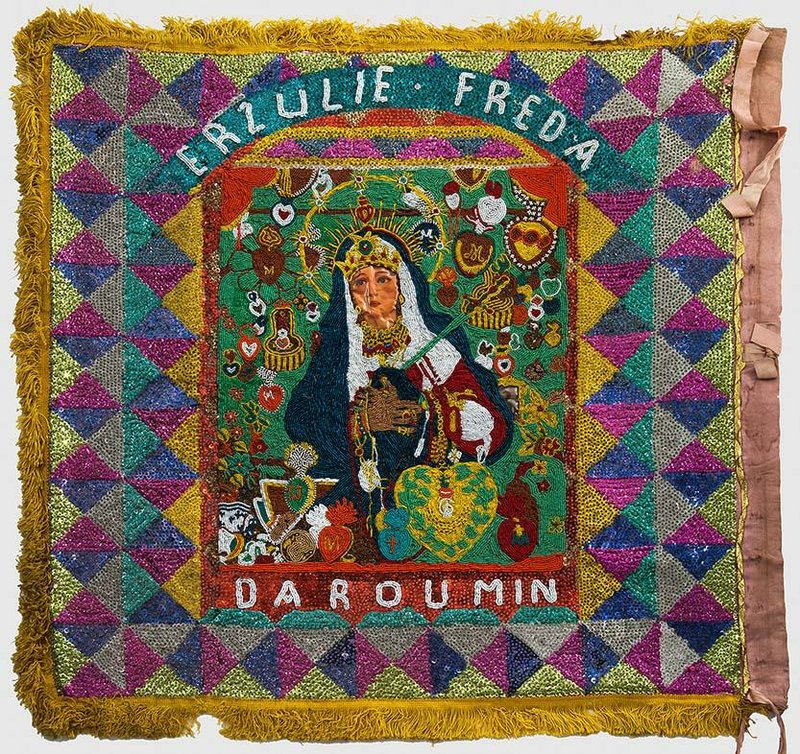WHAT: “Sacred Symbols in Sequins: Vintage Haitian Vodou Flags”
WHERE: Gallery I, University of Arkansas at Little Rock, 2801 S. University Ave., Little Rock
WHEN: Through July 26. Hours: 9 a.m.-5 p.m. Monday-Friday. Call (501) 569-8977.
VODOU? SOUNDS WEIRD. That is because our culture has depicted vodou (or, more generically, voodoo) as black magic, something frightening and superstitious. The stuff of horror flicks. However, to practitioners, it is a faith rooted in a world of spirits guided by God that is focused on taking care of the soul, feeding the hungry, caring for the sick.
OK, SO WHAT’S IN IT? Sixteen flags, six bottles and five photographs.
SEQUINS? REALLY? Yes, and beadwork, too. Designs are vivid and intricate.
DETAILS: The faith and its ritual objects reflect Roman Catholic iconography and a West African visual sensibility. Mary, the mother of Jesus, is depicted as Ezili Danto, among other lwa (deities). As Our Lady of Sorrows, Mary is represented as Ezili Freda Daroumin. Roman Catholic saints are also depicted.
The ritual flags depict attributes of the sacred and resemble Roman Catholic processional banners. They are designed to focus attention on the spirits. They are on burlap or cotton, usually with a stenciled design upon which beads, sequins and sometimes images of Catholic saints are attached.
Particularly fascinating is the depiction of two serpents as the father and mother of creation. Their sometimes entwined forms recall the medical symbol or suggest a primitive DNA depiction.
Along with the flags, there are colorfully sequined bottles, whose contents (liquor or herbed water) are used to bless and purify sacred space and devotees and to invoke the spirits. There also are five photographs of altars and temples.
DON’T MISS: The wonderful banner Seisme by Evelyne Alcide. Created after the Jan. 12, 2010, earthquake in Haiti, it shows death and destruction in Port-au-Prince, the country’s capital city. It uses vivid colors to depict a horrific reality.
SHOULD YOU GO? Yes, it’s a fascinating glimpse at a rich, often misunderstood culture.
Weekend, Pages 34 on 06/13/2013
